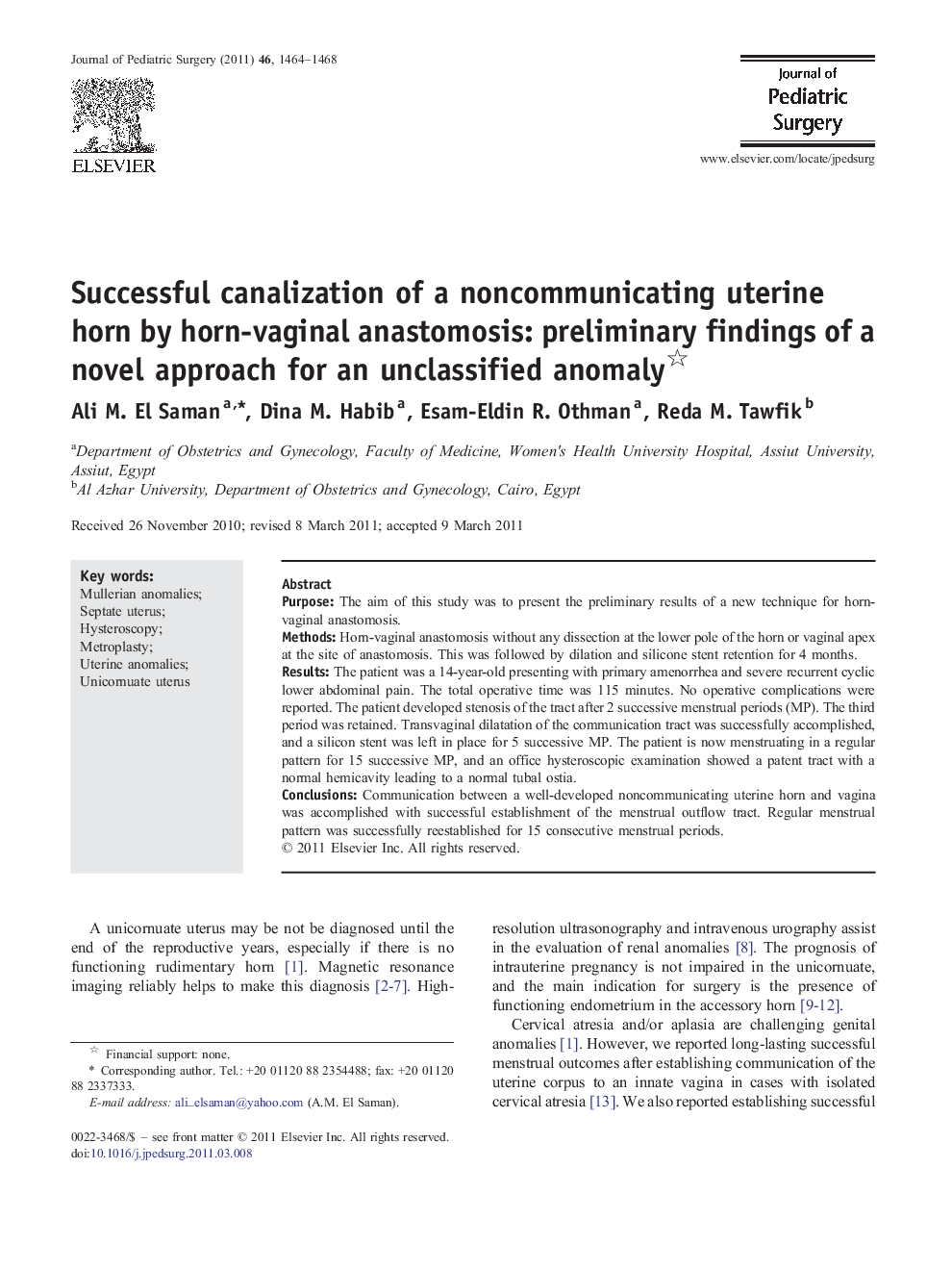| Article ID | Journal | Published Year | Pages | File Type |
|---|---|---|---|---|
| 4156657 | Journal of Pediatric Surgery | 2011 | 5 Pages |
PurposeThe aim of this study was to present the preliminary results of a new technique for horn-vaginal anastomosis.MethodsHorn-vaginal anastomosis without any dissection at the lower pole of the horn or vaginal apex at the site of anastomosis. This was followed by dilation and silicone stent retention for 4 months.ResultsThe patient was a 14-year-old presenting with primary amenorrhea and severe recurrent cyclic lower abdominal pain. The total operative time was 115 minutes. No operative complications were reported. The patient developed stenosis of the tract after 2 successive menstrual periods (MP). The third period was retained. Transvaginal dilatation of the communication tract was successfully accomplished, and a silicon stent was left in place for 5 successive MP. The patient is now menstruating in a regular pattern for 15 successive MP, and an office hysteroscopic examination showed a patent tract with a normal hemicavity leading to a normal tubal ostia.ConclusionsCommunication between a well-developed noncommunicating uterine horn and vagina was accomplished with successful establishment of the menstrual outflow tract. Regular menstrual pattern was successfully reestablished for 15 consecutive menstrual periods.
